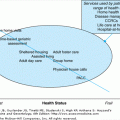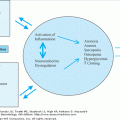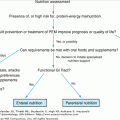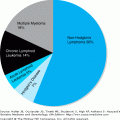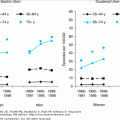Definition
Pressure ulcers are areas of local tissue trauma, usually developing where soft tissues are compressed between bony prominences and any external surface for prolonged time periods. A pressure ulcer is a sign of local tissue necrosis. Pressure ulcers are most commonly found over bony prominences subjected to external pressure. The most common locations are sacrum, ischial tuberosities, trochanters, and heels with sacral and heel sites most frequent. Pressure exerts the greatest force at the bony tissue interface; therefore, there may be significant muscle and subcutaneous fat tissue destruction underneath intact skin. Other terms for pressure ulcers include bedsore or decubitus ulcer, both of which imply development only in those confined to bed. Since the major causative factor is pressure, and because pressure ulcers occur in positions other than just lying down, pressure ulcer is the preferred term.
Epidemiology
The incidence and prevalence of pressure ulcers are high in all health-care settings. Among hospitalized older patients, the prevalence of pressure ulcers is estimated at 15%. Among patients expected to be confined to bed or chair for at least 1 week, the prevalence of stage II and greater pressure ulcers is as high as 28%, and the incidence during hospitalization ranges between 8% and 30%. Pressure ulcers generally occur within the first 2 weeks of hospitalization (the first 5 days in critical care units), and of those patients with an ulcer, more than half develop them after admission.
Pressure ulcers represent a significant health concern for those in nursing homes, rehabilitation systems, and for special populations. The incidence of new lesions varies widely by clinical situation: the highest rates are found among orthopedic populations (9–19% incidence) and quadriplegics (33–60% incidence). Among nursing homes, prevalence estimates vary from 2.3% to 28%. Incidence is similarly diverse with reports of 2.2% in a database study of a large corporate nursing home chain to 24% in a prospective observational study of 255 nursing home residents in multiple settings. As many as 20% to 33% of persons admitted to nursing homes have a stage II or greater pressure ulcer. Pressure ulcer development among new residents admitted ulcer-free during the initial 4 weeks of nursing home residence is 11% to 14%. Twenty-two percent of those residents admitted ulcer-free develop ulcers within 2 years of residence. African Americans demonstrate a higher incidence of pressure ulcers and more severe pressure ulcers compared to Caucasians in nursing homes with incidence rates reported as 0.56 per person year compared to 0.35 per person year for Caucasians. Incidence of stage II to IV pressure ulcers are nearly two times higher among African Americans than Caucasians. Further, pressure ulcer-associated mortality is higher among blacks than among whites.
Rehabilitation facilities present special concerns related to pressure ulcer development, because patients in these facilities have conditions that limit mobility, such as spinal cord injury, traumatic brain injury, cerebral vascular accident, burns, multiple trauma, or a chronic neurological disorder. Prevalence rates range from 12% to 25%. Individuals with spinal cord injury are at higher risk for pressure ulcer development, with incidence rates reported at 20% for those undergoing spinal surgery, increasing to 30% to 40% over 1 year’s time. Prevalence of pressure ulcers in spinal cord injury persons is also high with reports of 33% to 40% during acute rehabilitation and for those living in the community, with recurrence rates up to 40% after an ulcer heals. In the community, the prevalence of pressure ulcers is 6% to 9% in home health-care settings, and 1.6% in outpatient clinic settings. In the home health setting, 20% of the pressure ulcers develop in the first week after admission, and the incidence increases 10% each week through week 4. Of those who develop a pressure ulcer, 50% develop the ulcer within 24 days after admission to home health services.
Morbidity Associated with Pressure Ulcers
Pressure ulcers can lead to pain and disfigurement. Of those persons with pressure ulcers who are able to report pain, across nursing homes, home health, and hospital settings, 87% report pain with dressing changes, 84% report pain at rest, and 42% report pain both at rest and during dressing changes. Further, 18% of those persons reporting dressing change wound pain report pain at the highest level (e.g., “excruciating”). Yet, only 6% of those persons reporting pressure ulcer pain receive any medication for pain. There is some evidence that a higher proportion of persons with stage III or IV ulcers report ulcer pain compared to those persons with stage II ulcers and they report more severe pain than those with stage II pressure ulcers.
Septicemia is the most severe complication from pressure ulcers. The incidence of bacteremia from pressure ulcers is approximately 1.7 per 10 000 hospital discharges. When the pressure ulcer is the source of bacteremia, overall mortality is 48%. Further, septicemia is reported in 40% of pressure ulcer-associated deaths. Clinicians should be aware that transient bacteremia occurs after pressure ulcer debridement in as many as 50% of patients. Other infectious complications of pressure ulcers include wound infection, cellulitis, and osteomyelitis. Infected pressure ulcers are one of the most common infections found in skilled nursing facilities, and are reported in 6% of residents. Of note, pressure ulcers are typically colonized with ≥105 organisms/mL of normal skin flora. Although ≥105 organisms/mL of normal skin flora can cause local infection in intact skin and impair wound healing in flaps and skin grafts, chronic wounds such as pressure ulcers may bear microbial growth at this level for prolonged periods without noticeable clinical manifestations of infection and with evidence of healing. Among patients with nonhealing or worsening pressure ulcers, 26% of ulcers have underlying bone pathology consistent with osteomyelitis, 88% are colonized with Pseudomonas aeruginosa species, and 34% with Providencia species. The presence of either P aeruginosa or Providencia species should not be considered typical colonization. Infected pressure ulcers also can serve as reservoirs for infections with antibiotic-resistant bacteria.
Prolonged hospitalization, slow recovery from comorbid conditions, and increased death rates are consistently observed in elderly individuals who develop pressure ulcers in both hospitals and nursing homes. The death rate among bed- and chair-bound patients who develop a pressure ulcer during hospitalization is 60% 1 year after discharge, whereas the death rate for patients who do not develop a pressure ulcer is 38%. In addition, failure of an ulcer to heal or improve has been associated with a higher rate of death in nursing home residents. Nursing home residents whose pressure ulcer healed within 6 months show a lower mortality rate (11% vs. 64%) than residents with ulcers that did not heal within 6 months. It is unclear how pressure ulcers lead to death. The link between pressure ulcers and mortality may be related to an unidentified causal pathway, to pressure ulcers as a marker for coexisting morbidity in frail, sick patients, or to the association between fatal sepsis and pressure ulcers as cause of death. Whatever the link, pressure ulcers are reported as a cause of death among 114 000 persons per year (age-adjusted mortality rate of 3.8 per 100 000 population).
Pressure ulcers have become a quality issue for all areas of health care. Pressure ulcer incidence and severity are used as markers of quality care by regulators in long-term care facilities, home care agencies, and acute care hospitals. As a result, pressure ulcers are on the national agenda for improving quality. The Institute for Healthcare Improvement’s 5 Million Lives Campaign lists preventing hospital-acquired pressure ulcers as one of 12 interventions that if implemented would dramatically improve the quality of American health care by protecting patients from harm. The Institute of Medicine’s report, Priority Areas for National Action: Transforming Health Care Quality, outlines 20 priority areas for improving health-care quality, and preventing pressure ulcers in frail older adults is one of these 20 priority areas. In 2003, the National Quality Forum endorsed 30 “safe practices” that should be universally utilized in applicable health care settings to reduce the risk of harm resulting from processes, systems, or environments of care. This list includes the practice of evaluating each patient upon admission, and regularly thereafter, for the risk of developing pressure ulcers. The Department of Health and Human Services’ health goals for the nation, Healthy People 2010, identified a 50% decrease in the prevalence of pressure ulcers in nursing homes as a part of the nation’s health agenda and reducing pressure ulcers in high-risk residents is a top priority for the Medicare Quality Improvement Organization’s 9th scope of work, as well as for a multiorganization campaign to advance excellence in nursing home care initiated in 2007. This emphasis on pressure ulcers across the spectrum of health care settings highlights the importance of the condition for clinicians. Pressure ulcers have also received attention in the courtroom. Organizations have been prosecuted for negligence related to pressure ulcer care and development, and, in a landmark case, one health-care facility operator was found guilty of manslaughter for a resident’s death related to improper care for her pressure ulcers.
Pathophysiology
Pressure ulcers are the result of mechanical injury to the skin and underlying tissues. The primary forces involved are pressure, shear, friction, and moisture. Pressure is the perpendicular force or load exerted on a specific area, causing ischemia and hypoxia of the tissues. High-pressure areas in the supine position are the occiput, sacrum, and heels. In the sitting position, the ischial tuberosities exert the highest pressure, and the trochanters are affected in the sidelying position. As the amount of soft tissue available for compression decreases, the pressure gradient increases, thus, most pressure ulcers occur over bony prominences where there is less tissue for compression and the pressure gradient within the vascular network is altered.
The changes in the vascular network allow an increase in the interstitial fluid pressure, which exceeds the venous flow. This results in an additional increase in the pressure and impedes arteriolar circulation. The capillary vessels collapse, and thrombosis occurs. Increased capillary arteriole pressure leads to fluid loss through the capillaries, tissue edema, and subsequent autolysis. Lymphatic flow is decreased, allowing further tissue edema, and contributing to the tissue necrosis.
Pressure, over time, occludes blood and lymphatic circulation, causing deficient tissue nutrition and accumulation of waste products, as a result of ischemia. If pressure is relieved before a critical time period is reached, a normal compensatory mechanism, reactive hyperemia, restores tissue nutrition and compensates for compromised circulation. If pressure is not relieved, the blood vessels collapse and thrombose. The tissues are deprived of oxygen, nutrients, and waste removal. In the absence of oxygen, cells use anaerobic pathways for metabolism and produce toxic by-products. The toxic by-products lead to tissue acidosis, increased cell membrane permeability, edema, and eventual cell death.
Tissue damage may also be owing to reperfusion and reoxygenation of the ischemic tissues or postischemic injury. Oxygen is reintroduced into tissues during reperfusion following ischemia. This triggers oxygen-free radicals known as superoxide anion, hydroxyl radicals, and hydrogen peroxide, which induce endothelial damage and decrease microvascular integrity.
Pressure is the greatest at the bony prominence and soft tissue interface, and gradually lessens in a cone-shaped gradient to the periphery. Thus, although tissue damage apparent on the skin surface may be minimal, the damage to the deeper structures can be severe. In addition, subcutaneous fat and muscle are more sensitive than the skin to ischemia. Muscle and fat tissues are more metabolically active and, thus, more vulnerable to hypoxia with increased susceptibility to pressure damage.
Presentation
The first clinical sign of pressure ulcer formation, blanchable erythema, presents as discoloration of a patch or flat, nonraised area of the skin larger than 1 cm. This discoloration presents as redness or erythema that varies in intensity from pink to bright red in light-skinned patients. In dark-skinned patients, the discoloration appears as deeper normal ethnic pigmentation; a purple or blue–gray hue to the skin. Other characteristics include slight edema and increased temperature of the area. The beginning clinical indicators of pressure ulceration all relate to the signs of inflammation in the tissues. This beginning stage of damage is transient if the pressure is relieved. If pressure is not relieved, the damage can progress.
Nonblanchable erythema involves more severe damage to underlying tissues and is commonly the first stage of pressure ulceration (stage I pressure ulcer). The color of the skin is more intense. It varies from dark red to purple or cyanotic in both light- and dark-skinned patients. Dark-skinned patients exhibit deepening of normal skin color, a purple or gray hue to the skin, and changes in skin texture, with induration and an orange-peel appearance. Skin temperature is cool compared with healthy tissues, and the area may feel indurated. This stage of tissue destruction is also reversible, although tissues may take 1 to 3 weeks to return to normal.
The result of further deterioration in the tissues is evidenced as the epidermis is disrupted with subepidermal blisters, crusts, or scaling present (stage II pressure ulcer). If properly treated, the situation may resolve in 2 to 4 weeks. The early pressure ulcer is superficial, with indistinct margins and a red, shiny base, and reflects continued tissue insult and progressive injury. It is usually surrounded by erythema. If not dealt with aggressively, the lesion may progress to a chronic, deep ulcer. Superficial ulcers also may begin at the skin surface as the result of friction and moisture on the skin, the effects of both are increased with pressure. While superficial ulcers may progress to deeper ulcers, many deep ulcers do not originate at the skin surface; they begin at the bony prominence and soft tissue interface, and spread to involve the skin structures.
The chronic, deep, full-thickness ulcer usually has a dusky red wound base and does not bleed easily. It is surrounded by blanchable or nonblanchable erythema or deepening of normal skin tone, induration, and warmth. Undermining, or pocketing, and tunneling may be present with a large necrotic cavity. Eschar formation may be a result of larger vessel damage below skin surface from shearing forces. Eschar is the formation of an acellular dehydrated compressed area of necrosis, usually surrounded by an outer rind of blanchable erythema. Eschar formation indicates a full-thickness loss of skin.
Assessment
Assessment involves screening for risk of developing pressure ulcers, assessment of the severity of the tissue damage (staging), and evaluation of ulcer healing over the course of treatment.
Pressure ulcer development is related to multiple factors, with immobility or severely restricted mobility being the most important risk factor for all populations and a necessary condition for the development of pressure ulcers. A study of geriatric patients, who were monitored for movements using devices on the bed, showed that individuals with greater than 50 movements a night did not develop pressure ulcers compared to 90% of individuals with 20 or fewer spontaneous body movements at night who developed a pressure ulcer.
Incontinence, malnutrition, impaired mental status, and altered sensation or response to pain and discomfort are all risk factors with strong relationships to pressure ulcer development in prospective studies. Fecal incontinence has a more powerful relationship to pressure ulcer development than urinary incontinence. Other risk factors include dry skin, increased body temperature, decreased blood pressure, and advanced age. Identification of age as a risk factor may be related to the concomitant chronic diseases more prevalent in older persons or the age-associated changes in the skin that may play a role in this increased risk.
For practitioners to intervene cost-effectively, a method of screening for risk of developing pressure ulcers is necessary. Use of a risk assessment tool is a screening mechanism to identify those persons at risk of developing pressure ulcers in multiple health-care settings. Risk assessment is recommended in clinical practice guidelines for pressure ulcers. The purpose in identifying patients at risk for pressure ulcer development is to allow for appropriate use of resources for prevention. The use of a risk assessment tool allows targeting of interventions to specific risk factors for individual patients. There is, however, limited evidence to support a direct link between use of risk assessment tools and decreased incidence of pressure ulcers. Multifaceted prevention interventions that have included use of risk assessment tools have shown decreased pressure ulcer incidence levels from 13% to 23% preintervention to 2% to 5% postintervention. The outcome, however, cannot be solely attributed to use of risk assessment tools. Use of risk assessment tools is linked to increased documentation of prevention interventions and may be better than use of clinical judgment alone. While there is no study that provides definitive evidence linking risk assessment directly with pressure ulcer prevention, there is a relationship between conducting risk assessment and initiating preventive interventions leading to decreased pressure ulcer incidence.
Pressure ulcer risk assessment should be performed on admission to the health-care setting and at periodic intervals thereafter. In acute care hospitals, risk assessment should be repeated every 48 hours. Those persons admitted to intensive or critical care units should have risk assessment conducted on admission and if determined at risk, daily thereafter. In home health settings, risk assessment should be conducted weekly for the first 4 weeks with every other week reassessments thereafter depending on patient condition and frequency of home visits. Nursing home residents should be reassessed for pressure ulcer risk status weekly for the first 4 weeks following admission followed by quarterly assessments.
The most commonly used risk assessment tools are the Norton Scale and the Braden Scale for Predicting Pressure Sore Risk. The Norton Scale is the oldest risk assessment instrument. Developed in 1961, it consists of five subscales: physical condition, mental state, activity, mobility, and incontinence. Each parameter is rated on a scale of 1 to 4, with the sum of the ratings for all five parameters yielding a total score, ranging from 5 to 20. Lower scores indicate increased risk, with a score of or below 16 indicating “onset of risk” and scores 12 and below indicating high risk for pressure ulcer formation.
The Braden Scale was developed in 1987 and is composed of six subscales: sensory perception, moisture, activity, mobility, nutrition, and friction and shear. All subscales are rated from 1 to 4, except for friction and shear, which is rated from 1 to 3. The subscales may be summed for a total score, with a range from 6 to 23. Lower scores indicate lower function and higher risk for developing a pressure ulcer. The cutoff score for hospitalized adults is considered to be 16, with scores of 16 and below indicating at-risk status. In older patients, some have found cutoff scores of 17 or 18 to be better predictors of risk status. Levels of risk are based on the predictive value of a positive test. Scores of 15 to 16 indicate mild risk, with a 50% to 60% chance of developing a stage I pressure ulcer; scores of 12 to 14 indicate moderate risk, with a 65% to 90% chance of developing a stage I or II lesion; and scores below 12 indicate high risk, with a 90% to 100% chance of developing a stage II or deeper pressure ulcer.
Specific prevention strategies should be targeted to risk factors identified in individual patients. In those persons in whom prevention is not successful, the continued monitoring of risk status may prevent further tissue trauma at the wound site and development of additional wound sites.
Pressure ulcers are commonly classified using grading or staging systems based on the observable depth of tissue destruction. The stage is determined on initial assessment by noting the deepest layer of tissue involved. The ulcer is not restaged unless deeper layers of tissue become exposed. The initial method of classifying pressure ulcers was a pathology-based classification system intended to simplify communication for health-care professionals, provide a mechanism for identification of pressure ulcers, and suggest a broad guide for determining whether operative care was needed. Each grade of pressure ulceration was defined by the anatomic limit of soft tissue damage that could be observed. The numeric classification system suggested an orderly evolution of pressure ulceration. However, it is unknown if all pressure ulcers heal or deteriorate in a linear fashion.
The most commonly used staging system is the National Pressure Ulcer Advisory Panel’s (NPUAP) classification system describing four stages of pressure ulcers. The NPUAP staging system was slightly revised in 2007 and Table 58-1 presents definitions for the four pressure ulcer stages. As part of the staging classification revisions, the NPUAP has also suggested criteria for deep tissue injury (DTI), which is tissue damage that does not fit into the classic four pressure ulcer stages. DTI presents as purple, blue, or black areas of intact skin. These lesions commonly occur on heels and the sacrum, and signal more severe tissue damage below the skin surface. DTI lesions reflect tissue damage at the bony tissue interface, and may progress rapidly to large tissue defects.
PRESSURE ULCER STAGE | DEFINITION AND CLINICAL DESCRIPTION |
|---|---|
Stage I |
